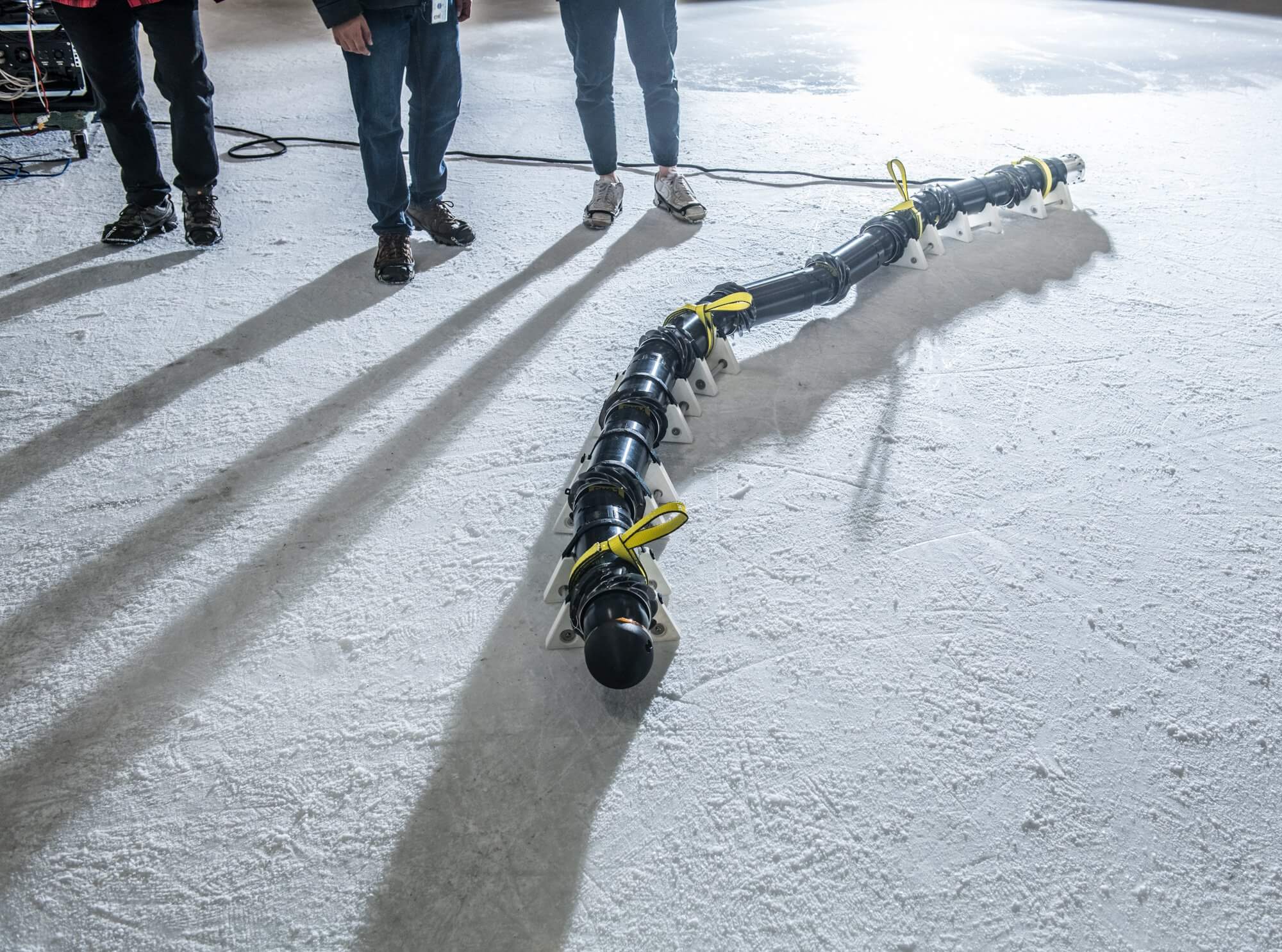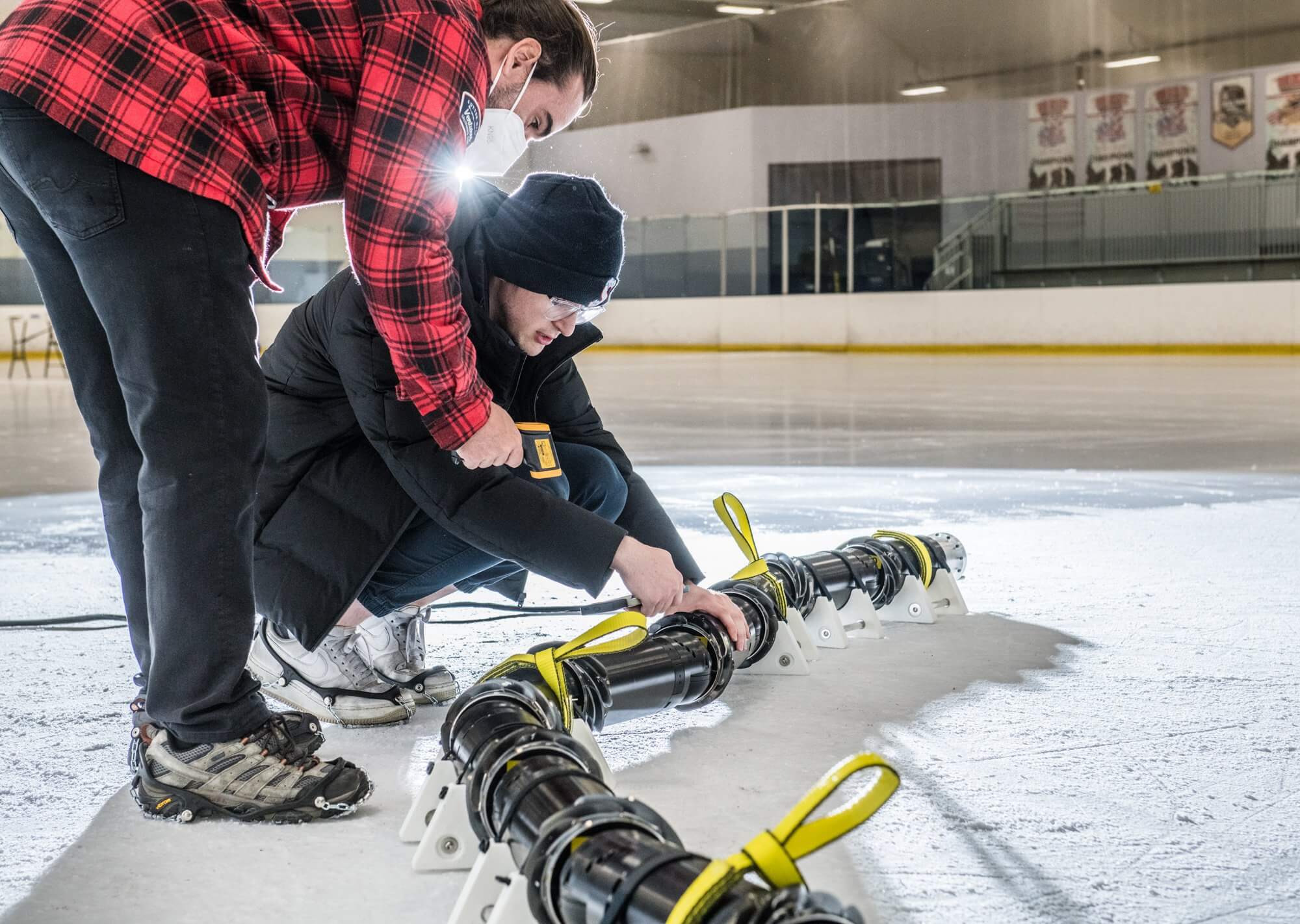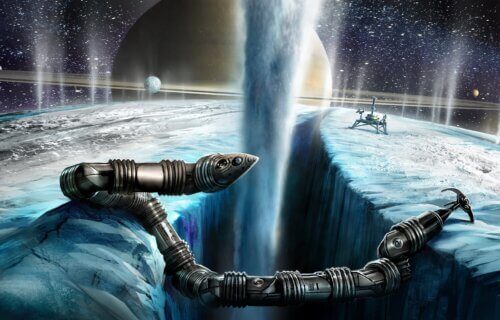PASADENA, Calif. — Scientists are currently developing a robotic snake whose mission would be to search for extraterrestrial life. The Exobiology Extant Life Surveyor (EELS) system is under development at NASA’s Jet Propulsion Laboratory (JPL). Scientists are designing this elongated robot to traverse otherworldly terrains by utilizing spinning wheels along its body.
Its primary target is the vent systems on Enceladus, a small icy moon of Saturn. However, EELS could also find a job here on Earth, navigating challenging environments. Data from NASA’s Cassini spacecraft suggests that Enceladus possesses a liquid ocean beneath its icy crust. Plumes erupting from the moon’s surface serve as direct conduits to this liquid water, potentially offering the easiest path to a habitable liquid ocean.
Unlike traditional rover vehicles, EELS is capable of investigating such environments by crawling down crevasses and swimming through water. The system employs innovative rotating propulsion units that function as tracks, gripping mechanisms, and underwater propeller units. This would enable the robot to access a plume vent exit and trace it back to its ocean source.

Project Manager Dr. Martin Robinson envisions a platform that could explore any location, even descending into lunar lava tubes. The system’s adaptability opens up possibilities for other destinations, such as Martian polar caps and crevasses in Earth’s ice sheets.
JPL is currently collaborating with Earth scientists to identify high-priority, high-impact terrestrial scientific investigations that can also demonstrate EELS’ capabilities in a planetary analogue environment. Tests have been conducted inside Canada’s Athabasca Glacier and Mount Meager volcano.

JPL spokesperson Melissa Pamer highlights the versatility and machine intelligence of EELS, explaining that although the concept was initially inspired by vents on Saturn’s moon Enceladus, it could eventually help explore various unvisited planetary destinations and locations on Earth.
Dr. Hiro Ono, Principal Investigator at JPL, describes the project as a “versatile, highly intelligent, and super awesome snake robot.” Dr. Martin Robinson adds that discovering potential life would be an incredible achievement, signifying that we are not alone.
South West News Service writer Dean Murray contributed to this report.

